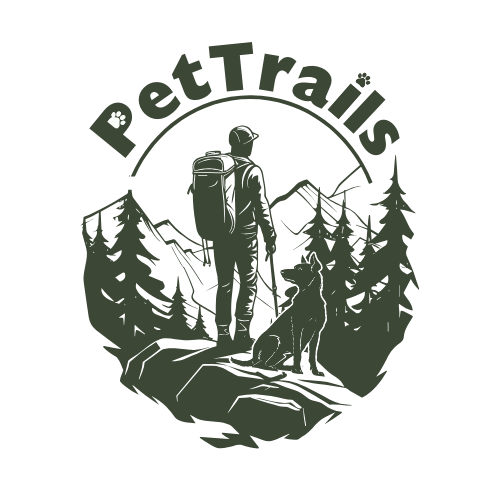
Seasonal Trail Permits & Legal Rules: What Pet Owners Need to Know
Share
The rules for hiking with your dog change more than you might think, especially across seasons and land types. Here’s how to stay informed, legal, and respectful on any trail.
Why Understanding Trail Rules Matters
Many natural areas have specific rules to protect wildlife, minimize environmental impact, and balance trail use among diverse visitors.
These rules aren’t just suggestions. In some cases, violating them can result in fines, or worse, contribute to dogs being banned from trails. By understanding where your dog is welcome, when rules change seasonally, and how different agencies manage public lands, you ensure access remains open for all.
Know the Land You’re Hiking On
One of the most overlooked aspects of trail rules is who manages the land. Pet access varies dramatically depending on the agency:
National Parks
- Pets are typically heavily restricted. Dogs are usually allowed only in developed areas (parking lots, campgrounds, paved paths).
- Trails are almost always off-limits to dogs to protect wildlife and reduce ecological disruption.
National Forests
Generally pet-friendly, including backcountry trails. Leashes are often required but policies are more relaxed than in national parks.
State Parks
Rules vary by state, but many allow dogs on trails, especially in general day-use areas. However, some parks limit pet access to certain trails only, excluding dogs from nature preserves, wildlife habitats, or narrow single-track paths.
Local or City Parks
- Often allow dogs, but may require local pet licenses or off-leash permits for designated areas.
- Urban trails may have seasonal closures or dog-specific hours to manage usage.
Knowing who manages the land is the first step toward understanding the rules that apply.
Seasonal Changes That Can Affect Dog Access
While most parks and agencies don’t change their pet policies every season, environmental conditions and operational needs may lead to temporary access adjustments that affect dog-friendly trails.
Spring
In select areas, trails may be closed to dogs during bird nesting or wildlife breeding periods. Sensitive environments, like alpine meadows, sometimes implement soft restrictions or additional signage to reduce impact from foot and paw traffic.
Summer
Wildfire season can lead to full or partial closures, regardless of whether dogs are typically permitted. Popular trails may require timed entry or vehicle reservations. These policies may not target dogs specifically but can change when and how pet owners can visit.
Fall/Winter
During hunting season, some multi-use areas may tighten leash regulations or require dogs to wear high-visibility gear. Snow accumulation and shorter daylight hours can also prompt seasonal trail closures or limited hours, even on trails that normally welcome dogs.
These changes are more common in certain regions or high-impact areas. They’re not universal, but they’re important to watch for. Always check official sources in advance to ensure a smooth and legal outing with your dog.
Do You Really Need a Permit?
Dog-specific permits are rare, with the exception of:
- Urban off-leash dog parks, which may require a city-issued pass or proof of vaccination.
- Dog-friendly beaches or specialized recreation areas managed at the local level.
Wilderness permits typically apply to humans, not pets. However, when dogs are allowed in these areas (which is increasingly rare), the standard rules include:
- Keeping dogs leashed at all times.
- Strict waste disposal requirements (sometimes requiring packing out all waste in designated bags).
- Prohibitions on dogs in fragile backcountry zones.
The most common type of permit hikers will encounter is a parking or day-use pass, often required for accessing trailheads on state or federal land. These are usually per vehicle, not per pet.
Practical Steps Before Every Hike
To ensure you’re in compliance, follow this simple pre-hike checklist:
- Identify the managing agency (National Park, Forest Service, state park, local park).
- Visit the official website for up-to-date pet rules and seasonal alerts.
- Check your trail on a hiking app like AllTrails to read recent user reviews about dog conditions.
- Look for signs at the trailhead, including leash requirements, closures, and wildlife advisories.
- Carry dog waste bags, a visible ID tag, and a leash that meets length requirements (some areas limit to 6 feet).
Good Trail Behavior Is the Best Policy
Even when rules are loose, best practices help keep trails welcoming for dogs:
- Always clean up after your pet and pack it out if required.
- Keep your dog leashed or under impeccable voice control.
- Step aside for other hikers, bikers, or horseback riders.
- Avoid letting your dog chase wildlife or wander off-trail.
Practicing good etiquette is just as important as following posted rules, and it helps prevent future restrictions.
Final Thoughts
Understanding seasonal regulations and land-specific policies is one of the most overlooked aspects of hiking with dogs. By knowing where you’re hiking and how conditions may shift throughout the year, you’ll avoid fines, protect the environment, and keep dog-friendly trails open for all.
Have questions about trail permits or dog access? Drop them in the comments or share your experience with seasonal rules. We’d love to hear how you navigate the trails with your pup.
